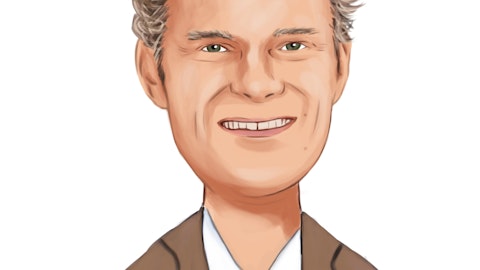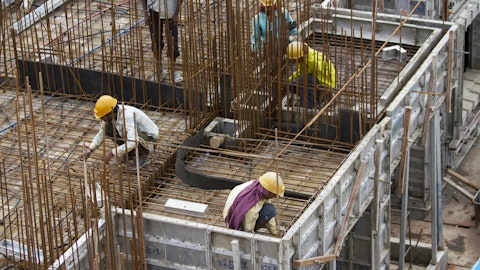Debbie Clifford: We are still targeting those sources of growth, Jay, as well as targeting the growth parameters of 10 to 15 points of revenue growth. Really, what we’re dealing with is this uncertain environment. And based on what we know today and assuming that market conditions are similar to what we’ve seen over the last several quarters, we do see revenue growth next year of about 9% or more. And what’s driving that is really all those puts and takes that I talked about in the opening commentary. It’s really important to remember that what we’re trying to do is set ourselves up for success over the long-term.
Jay Vleeschhouwer: Okay. Andrew, for you, following up on AU last week. There were a number of quite interesting and useful sessions on our roadmaps and product plans, particularly on AUC and more broadly with regard to the data model. So, let me ask you an unavoidably complex question about that. So, when you — so when you think about the role of what you call granular data, does that ultimately affect as you implement that the packaging or composition or consumption of the software? And you also gave quite detailed description of where you’re going with ACC and Bill and AC generally. But there’s no timeline in any of those presentations. So, how are you thinking about the GA of much of what you talked about last week at AU in terms of making commercial a very large set of new technology features, particularly for AC?
Andrew Anagnost: Yes. Okay. So, let me tackle that with the first thing around the granular data. So, ultimately, as you journey down this path, what does happen is the way the product operates all the products Forma in particular in terms of how it interacts with Revit and ultimately how those two blend together, they do become an environment that looks very much like the fusion environment. And that environment is very different, as you know, than what it currently exists in most of the wide — the mainstream usage of our AC products. So, yes, granular data ultimately leads to a different way that people consume and use the products in a different paradigm for which they actually engage with the product every day. So. that’s clear, okay?
Timeline, I don’t know exactly which presentation you’re in. I suspect given your questions, you are in the more longer term timeline presentation. So, a lot of stuff you saw there was over a two to five-year time frame, but a lot of that is going to show up in the two to three-year timeframe associated with some of the things you heard. Now, I think it’s kind of obvious to tell which ones we’re towards the earlier part of that spectrum rather to the later part of that spectrum. Turning some of these solutions over into infrastructure solutions and combining them with some of our infrastructure stuff. Probably towards the later end, getting the data more granular, uniting detailed design and conceptual design in Forma, probably much more closer.
That kind of expectation you can have with those road maps.
Jay Vleeschhouwer: Great, great. Thank you both.
Operator: Thank you. Our next question comes from the line of Adam Borg of Stifel.
Adam Borg: Awesome. Thanks so much for taking the question. Maybe for Debbie, just on the multiyear to annual billings transition. Maybe just if you could just remind us kind of where we are overall in the process relative to expectations. And I do know that there are still some smaller cohorts that have yet to transition and just curious kind of where we are for those and if that’s going to take place next year? Or is that still kind of in process?
Debbie Clifford: Sure. Thanks. The rollout is going well. We’re a couple of quarters in the systems are working. Customers and partners are behaving pretty much as we expected. So overall, the performance is in line with our expectations. I think the key thing is, remember, we’re kind of at the beginning of this journey. This is going to be a three-year journey. So we’re going to have a mechanical rebuild of free cash flow as we get into next year, fiscal 2025 and also in fiscal 2026. So some of the comments that I made on the call are important, and that is helping you think about how to normalize our fiscal 2024 cash flow headed into fiscal 2025. So we’re moving that $200 million at the beginning of fiscal 2024 as we head into fiscal 2025.





